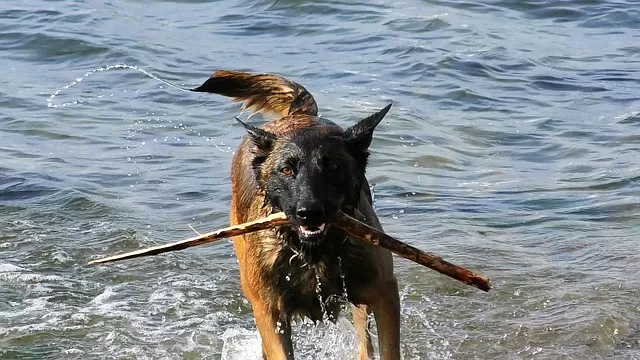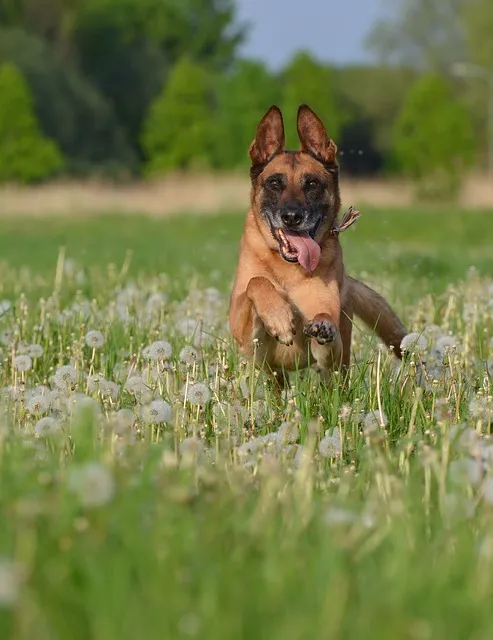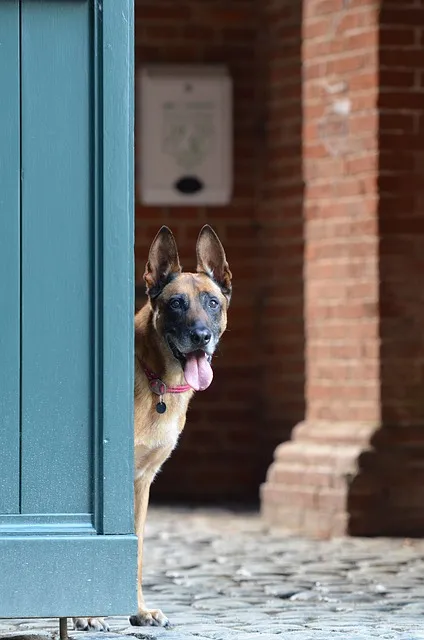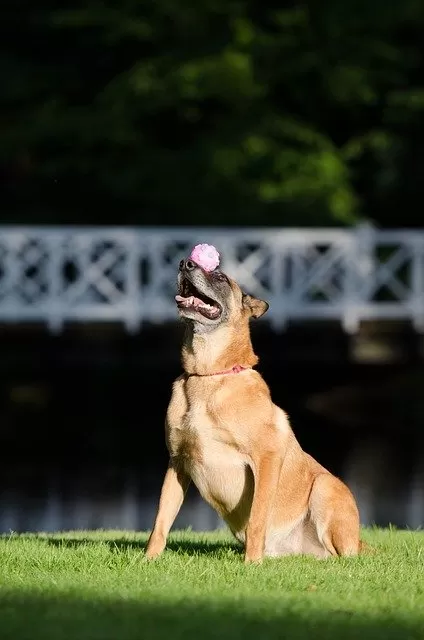The Belgian Malinois has a stunning look but is athletic, active, and intelligent, often partnered with law enforcement or the military.
They can make a great family dog and love to work being especially happy to have a purpose.
The Malinois is often confused with the German shepherd and shares some similar qualities although the German shepherd is larger and stockier and ranks number three on the AKC’s most popular breeds to the Malinois number thirty-nine which is moving up the ranks.
They are becoming a bit more popular than the German shepherd with the military and police due to their excellent guarding skills.
The herding group of the AKC has four different breeds that hail from Belgium, but in some countries, these four breeds are grouped together and referred to as the Belgian sheepdog.
The four breeds are the Belgian Laekenois, the Belgian Tervuren, the Belgian shepherd or Groenendael, and the Belgian Malinois.
These four breeds have a similar build but the big differences in the breeds lie in their coats.
They all have different coat textures with the Belgian shepherd being long, the Belgian Tervuren, long to medium, the Belgian Laekenois with short curly fur, and the Belgian Malinois sporting a short straight coat.
The textures and the coat colors are what make each stand out and help to identify one from the other.
In this post, I will concentrate on the different Belgian Malinois colors and patterns as well as the popular mahogany Belgian Malinois colors.

For your dog’s vitamin supplement, food, toys, or other dogs product please visit the Sundays for dogs website.
A Short History of the Belgian Malinois
The four breeds referred to above as the Belgian sheepdog, including the Belgian Malinois, were all bred to herd sheep and cattle and were excellent and fearless in performing this task.
The Belgian Malinois originated in Malines, Belgium, and was believed to have first been introduced in the USA in 1911.
They were quite popular just as the German shepherd was until the start of WWII and their importation stopped.
In fact, the German shepherd lost popularity due to Hitler’s use of this breed.
In the 1950s and ’60s, there was a resurgence of the Belgian Malinois and the American Kennel Club recognized them in 1959.
Even though they are still outstanding herders, they have found great popularity in law enforcement, in the military, in search and rescue, and as loyal and steadfast family dogs.
To check your shepherds’ health status or their DNA checks, please visit the Embark vet website for all the help you may need.

Belgian malinois appearance
At first glance, many can mistake a Belgian Malinois for a German shepherd, but Malinois are smaller with males weighing in from 60lbs to 80lbs and females from 40lbs to 60lbs.
Even though they are well-toned and agile, the Malinois is not a stocky dog and shows a more elegant build, especially the females.
They carry themselves a bit like royalty. Willing to work hard, they don’t like to be idle, so exercise and the companionship of their master and family are a necessity.
To check your Belgian Malinois health status or their DNA, please visit the Embark vet website for all the help you may need.
Belgian Malinois Coat Colors and Patterns
The Belgian Malinois has a straight but short coat which is a double coat consisting of an undercoat of fluffy fur for insulation and an outer coat that is waterproof. Their fur is thicker on their tail, the backs of their legs, and around their neck.
They also do shed their fur heavily in spring and fall, known as “blowing” their coat in shedding season.

The Belgian Malinois can be found in twelve different colors and patterns with five being the standard and most common colors.
Listed below are the twelve colors with the first five being the standard colors. Some of the colors are quite rare.
- Mahogany Belgian Malinois – The mahogany Belgian Malinois colors are a brownish-red shade and can range from the lighter side to deep rich mahogany. There are two color pigments, pheomelanin (red) and eumelanin (black) that are broken down by genes and determine exactly how light or dark their coat will be.
- Red Belgian Malinois – The red Belgian Malinois sports a stunning red coat that is lighter than the mahogany Malinois. All Belgian Malinois display a black mask on the ears, nose, and mouth and around the rims of the eyes. The mask really stands out on the red Belgian Malinois.
- Red Sable Belgian Malinois – The red sable Belgian Malinois shows off a deeper red shade but its hair at the tips is darker. Their fur may appear very dark if they have long thick fur.
- Fawn Belgian Malinois – The fawn Belgian Malinois is by far the most common and the one you’re most likely to see. Their coat usually appears a golden tan but can be a lighter shade or deeper. Their black masks also stand out quite well, appearing stately, on the fawn Belgian.
- Fawn Sable Belgian Malinois – The fawn sable Belgian Malinois generally displays a shade that is darker than the fawn Malinois but their fur is generally darker at the tip and gradually transitions to lighter at the root.
- Cream Belgian Malinois – The cream Belgian Malinois is not a common shade in the Malinois and comes about due to a lack of eumelanin which is a dark brown or black pigment. Cream breeds are mostly all cream except for their well-defined black mask. Cream is a very common color in other breeds.
- Cream Sable Belgian Malinois – The cream sable Belgian Malinois will have cream hair at the root, becoming gradually darker at the tip. This is the case with all sable dogs.
- Black Belgian Malinois – Black Belgian Malinois are in high demand with their shiny onyx coat. The signature black mask is not as pronounced because they are pure black.
- Grey Belgian Malinois – The grey Belgian Malinois came about because the black pigment is diluted in this particular shade. Often they are referred to as blue Belgian Malinois because as puppies, they have a bluish tinge. The Grey Belgian is usually quite expensive because they are very rare.
- Grey Sable Belgian Malinois – Once again the grey sable Belgian Malinois sports a grey that is lighter at the base and darker at the tips. Often it is hard to distinguish them from the grey Malinois.
- Liver Belgian Malinois – In the liver Belgian Malinois the black pigment is also diluted and they can range in shades of cream, yellow and red depending on the amount of red pigment or pheomelanin that is present. Belgians with liver coats have amber eyes and a liver nose.
- Brindle Belgian Malinois – Belgian Malinois that is brindle are rare, but everyone loves a brindle dog. Brindle is a coat pattern with a base color and darker stripes or patches, a bit similar to a tiger’s stripes. This is genetic and not all breeds have the genes to produce the brindle color and pattern.

The Belgian Malinois comes in a wide variety of colors and patterns listed above. Finding just what you want is another story.
You may have to seek out a breeder who deals specifically in one color or another. The most common colors are red, fawn and mahogany, while the rarest and most difficult to find is brindle.
If you’re wondering if color plays a role in temperament, do not worry because it does not. The Belgian Malinois color has no significance in temperament whatsoever. Temperament is determined by genes, training, and environment.
If you’re looking for a Belgian Malinois and have a certain color in mind do some research and get references so that you always find a reputable breeder for just the right Belgian Malinois.
